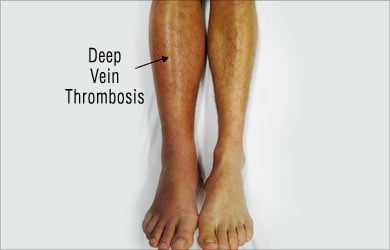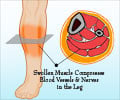- Leg Injuries and Disorders - (http://www.nlm.nih.gov/medlineplus/leginjuriesanddisorders.html)
About
Legs are tubular structures located below the hips and are made up of bones, muscles, blood vessels and other connective tissue. They play an important role in weight-bearing and movement.
Legs are easily prone to injuries while playing sports, running or falling. They can also be subject to injury during accidents. The injuries may affect the entire leg or may be localized to the hip, knee, ankle or foot. Many foot and ankle muscle start near the lower part of the leg and any injury or harm to these
Common leg injuries include sprains, strains, joint dislocations, cuts and
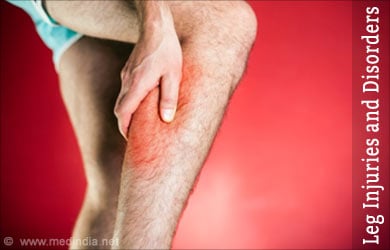
Common Problems of The Lower Leg
a. Injuries
Chronic exertional compartment syndrome (CECS) - Occurs due to repeated exercise or other stressful activities. It is commonly seen in athletes, marathon runners, soccer players and skiers. It is characterized by pain, weakness or numbness. Rest is the best coping method but symptoms may return once activity resumes. Compartment pressure readings (with and without exercise) are the gold standard for CECS diagnosis.
Stress fracture - Stress fracture in the lower leg is an overuse injury which can be difficult to diagnose. This happens when the muscles of the lower leg become fatigued and is unable to absorb stress, due to which it transfers that stress to the nearby bone causing a minor crack or fracture that may not be detected on X-rays.
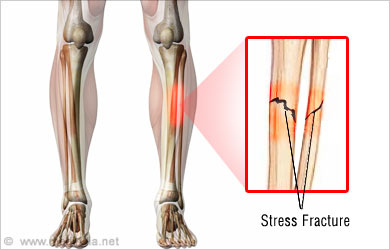
Medial tibial stress syndrome (MTSS) or shin splints – Medial tibial stress syndrome is a common injury among athletes, especially runners, caused by repeated stress on the connective muscles around the tibia. Symptoms include pain around the shin bone between the knee and the ankle. This has to be treated or it may lead to a stress fracture of the bone.
Periostitis - This chronic condition is caused by the inflammation of a layer of connective tissue (periosteum) that surrounds bone and is characterized by tenderness, pain and swelling of the bone. Strengthening the hip, use of proper shoes or other prosthetics can solve this problem.
Muscle cramp (NIGHT CRAMPS) - Muscle cramp is an involuntary and sudden contraction of muscles causing excruciating pain. It is caused by strenuous exercise in hot weather, certain medical conditions or some medications. Although not painful, it becomes temporarily impossible to use the affected muscle.
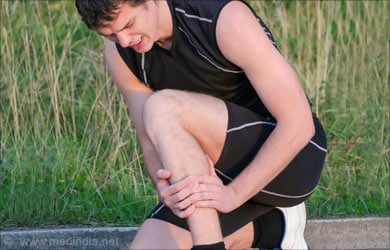
Achilles tendonopathy - Achilles tendonopathy is pain in the lower leg caused by overuse. It occurs along the tendon behind the ankle. The pain is slow to set in but continuous use of the leg can lead to rupture of the tendon. Currently there are several new treatments to deal with this problem.
Achilles tear - A tear in the Achilles tendon is another common injury of the lower leg that commonly occurs in sportspersons. This tear can lead to total rupture of the tendon and disability if it is not treated.
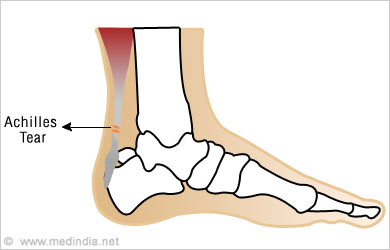
Calf muscle tears - An injury to the calf muscles causes pain. When the calf muscles are stretched beyond their threshold to withstand the tension it may result in micro tears in the muscle fibers. If not treated, it can lead to a total rupture of the muscle fibers.
b. Disease conditions
There are certain diseases that lead to problems in the leg and they include osteoarthritis, varicose veins and deep vein thrombosis.
Osteoarthritis - Also known as wear- and- tear arthritis, this type of arthritis occurs when the cartilage that protects the bones wears down with time. The condition mostly affects the neck, shoulders, lower back, hands, knees and hip. Pain, tenderness, loss of flexibility, stiffness and bone spurs is common symptoms. Risk factors include older age, female gender, obesity, certain occupations, bone injuries and deformities. There is no cure for arthritis but treatment can slow the progress of the disease and improve joint function. In extreme cases, joint replacement surgeries may be carried out.
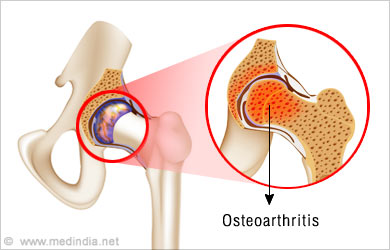
Varicose veins –These are thick, swollen and twisted veins, which is usually seen in the leg but can occur in other body parts too. Veins have valves which prevent the backflow of blood as it flows to the heart. If the valves become weak, or damaged, blood collects in the veins. This backlog of blood causes the veins to swell leading to varicose veins. Those at higher risk of developing varicose vein include those who are older, sedentary or those who have a family history. Females, especially pregnant ones, are at greater risk of developing varicose veins. A physical examination will help to diagnose the condition. Exercising, losing weight, sitting between work, elevating legs while sitting are all optimal measures to tackle the problem. If the varicose veins are very painful and complicated the doctor might recommend surgery.
Deep vein thrombosis (DVT) - is a blood clot that arises in the vein located mostly in the lower leg or thigh. This blood clot can break lose, enter the blood stream and reach the lungs where it can lead to pulmonary embolism. Symptoms include swelling, warmth, red coloration and tenderness over the vein. Treatment should focus on dissolving the clot and easing inflammation and pain. Care should be taken to drink plenty of fluids, walk or stretch whenever possible and keep the leg elevate during travel.
